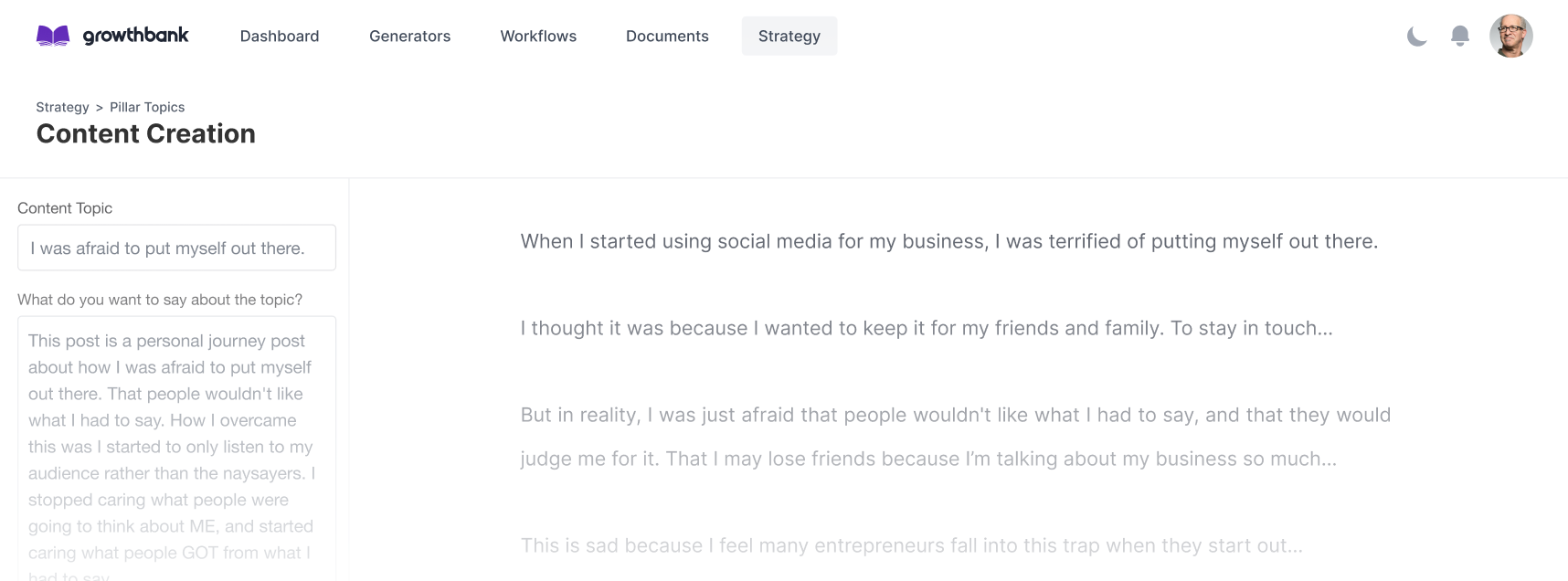
Are you tired of writing dull, uninspiring headlines that fail to grab readers' attention? If so, you're not alone. In today's fast-paced world, it can be tough to stand...
How often have you heard someone say they want to write their book or blog posts, but don’t know where to start? Or maybe you're a skilled copywriter and you’ve written something before, but didn’t get much feedback from anyone else. If either of these statements sounds familiar, then you might benefit from reading some copywriting tips.
Writing is a skill that takes time to develop. And even though writing is a common part of our daily lives, it’s also a very complex art form. There are countless ways to improve your writing skills, and the good thing is that you don’t have to spend years learning them. All you need is a little guidance.
Here are 20 copywriting tips from the pros. These tips cover topics such as how to structure your text, how to choose the right words, and how to create compelling headlines.
Taking shortcuts can be a great strategy for getting things accomplished quickly and efficiently, but they're not always the best approach for crafting compelling headline copy. Crafting headlines that capture the attention of readers requires time, creativity, and the right balance of words.
On the average, five times as many people read the headline as read the body copy. When you have written your headline, you have spent eighty cents out of your dollar. ~ David Ogilvy ~
A good headline can increase click-throughs and views, foster engagement, or even lead people into exploring your content. So get out of the rut and start creating amazing headings.
Crafting the perfect message for your target audience can be a tricky task. It needs to be engaging and informative, but also keep up with the trends of the times. Luckily it's possible! To make sure your writing is effective, start by understanding the interests of your readers.
Think about what challenges they're facing and how your message can help them to solve it. After all, you want reading your work to be an enjoyable experience for them that leaves them looking forward to more of it. If you weave a bit of wit into what you write where appropriate, even better!
A good chuckle or two will bring in a more loyal following; knowing that there is someone out there who 'gets' their sense of humor will certainly score you some points. With a bit of practice, you'll soon find that reaching and connecting with your target audience isn't so difficult after all.
When writing, use language that your readers will understand to keep their attention and make sure they see your message! Avoid using overly complex words and long sentences; instead, opt for short, easy-to-understand words and phrases.
Aim to make your writing amusing and captivating by incorporating fun language like puns or wordplay.
Going back to basics with simple language not only allows your message to be properly received but also adds an extra flair of entertainment to make it more enjoyable!
It's time to face the facts - we're living in a day and age where people don't have the time, or patience, for drawn-out speeches and long-winded emails. In this write fast, tweet faster world, one of the most important things to keep in mind is brevity.
The key to success here isn't saying the most; it's getting to your point in the most effective way possible. Being concise helps you be more articulate and stand out while avoiding confusion.
To make your work pop or connect with readers, always edit ruthlessly: trim away any irrelevant words, phrases or sentences and let your points shine through.
Active voice is key when it comes to copywriting and making an impact. Try to avoid the passive voice as much as you can, since it can make your writing seem weak, vague or unclear.
Active voice makes it easier for your readers to understand what you're trying to say and encourages them to take action; it also adds a sense of energy and urgency to your work that can be just the boost you need for it to stand out.
When writing, it's important to consider the needs of your readers. What are they looking for? How can you give them what they want? Doing some research to understand their struggles and challenges can help you write copy that is tailored to their specific needs. This will make it easier for them to relate to what you're saying and be more likely to take the next step.
For example, if you're addressing a group of entrepreneurs looking to launch their own business, try to incorporate information that helps them with common challenges like marketing, management or customer service.
Create content that adds value and helps your readers find solutions quickly and easily - this is how you make sure your copy resonates!
When it comes to writing, less is definitely more. So if you're looking to get your message across quickly and effectively, try to keep things brief! Keeping your sentences short and sweet helps maintain the flow of your text; it also encourages readers to keep going until they reach the end.
Remember that readers often skim texts - so make sure yours are concise and to the point. Being concise will also help you achieve a more conversational tone, making it easier for readers to connect with your content
Another tip for keeping things short and sweet is to use bullet points whenever possible: they break up long chunks of text and make them easier on the eyes; plus, they can be very visually appealing too!
Storytelling is one of the best ways to capture your readers' attention and keep them engaged! It's a great way to connect with your audience, as it allows you to explore topics more deeply and provide more insight.
When telling stories, make sure they are relevant to the topic at hand. Don't just pick any story that comes to mind; instead, try tying it in with something specific to make your point.
Also, remember not to get too bogged down in details - focus on keeping things interesting and entertaining while being succinct. Your stories don't have to be long or complicated either; even short anecdotes can be enough to hook readers in and add some colour to your content.

Humans are emotional creatures, and it's important to remember that when writing. Incorporating emotion into your copy will help you create a connection with readers and encourage them to take action
Using words that evoke emotion can make a huge difference in how your content is received - so try to be mindful of how you're wording things. For example, instead of saying "we offer great customer service" say something like "our customer service team is dedicated to providing the best possible experience"
Adding an emotional touch to your text also conveys credibility and helps ensure that people remember what you've written. It's all about creating an impactful message!
Power words are words that have a strong impact and evoke emotion. They can be used to add emphasis, create urgency, or even draw attention
Using power words correctly can make all the difference when it comes to getting your message across effectively - so don't be afraid to use them! Some examples of power words include: amazing, incredible, revolutionary, brilliant, extraordinary and life-changing
Power words often pack a punch and are great for making an impression - so use them wisely when writing copy!
Social proof is an important element of copywriting, as it helps to build trust and credibility. It's basically the idea that if other people have done something or experienced a certain result, then it must be good
There are many different ways to include social proof in your writing; one of the most effective is by including customer testimonials. This could be in the form of quotes from satisfied customers, case studies outlining how they achieved success with your product/service, or even screenshots of positive reviews
Build a Wall of Love With testimonial.to
When incorporating social proof into your content, make sure you pick examples that reflect positively on what you're offering - this will help give readers the confidence to take action!
When writing copy, it's easy to get wrapped up in explaining the features of your product or service. But instead of focusing solely on what you offer, make sure to also emphasize the benefits - these are what will really set you apart
For instance, if you're selling a product, don't just list its features; explain how it can help solve customers' problems and make their lives easier. This will show readers why they should take action and choose your product over others
Focusing on benefits is a great way to convey the value of what you're offering - so make sure to include them when writing copy!
Your copy should always include a call-to-action (CTA) if you want readers to take action. CTAs are phrases that prompt the reader to do something, such as signing up for a newsletter or purchasing a product
When writing your CTA, make sure it's clear and direct - don't be afraid to use words like "sign up" or "buy now". Also, avoid generic phrases like "click here"; instead, provide specific instructions on what they should do.
Using an effective CTA can be a powerful way to encourage readers to take action - so make sure you incorporate one in your copywriting!

Creating a sense of urgency is an effective way to get readers to take action. By giving them a reason to act now, you can encourage them to do something before it's too late - whether it be signing up for your newsletter or purchasing a product
There are many different ways to create a sense of urgency in your copy. You could use time-sensitive language such as "limited time only" or "now or never". You could also include discounts that are only available for a short period of time, or even set deadlines for certain offers
Adding urgency can be an effective method for getting people to take action - so try incorporating it into your copywriting!
Using numbers and lists can be a great way to make your copy more engaging and easier to read. They help break up long blocks of text, making it easier for readers to digest the information
When writing numbers or lists in your copy, make sure you keep them concise and organized. You could use bullet points or numbered lists for clarity; this will also make it easier for readers to scan through quickly
Including numbers and lists can be an effective way to present complex information in an easy-to-understand format - so consider using them when writing copy!
Subheadings are a great way to break up long blocks of text and make your copy more scannable. They allow readers to quickly identify the main points in an article, which makes it easier for them to digest the information
When writing subheadings, make sure they're relevant and informative. Try to use words that sum up the content underneath, or even ask a question - this will help draw readers in and keep them interested
Using subheadings can be an effective way to keep readers engaged with your content - so make sure you incorporate them when writing copy!
Using the second person can be a great way to make your copy more engaging and relatable. Instead of talking directly at readers, writing in the second person allows you to speak directly to them - making it feel like you're having a conversation
When writing in the second person, make sure you use words like "you" and "your". This will help create an intimate connection between you and your readers, which will make them more likely to take action
Writing in the second person can be an effective way to draw readers in - so try using it when crafting your copy!
In today's world of fast-paced content consumption, it's important to make sure your copy is scannable. This means using shorter sentences, breaking up text with headings and bullet points, and making sure the most important information is easy to find
When writing scannable copy, focus on clarity and brevity. Avoid long-winded descriptions and try to get your point across quickly - this will make it easier for readers to skim through and understand the main points
Making your copy scannable can be a great way to keep readers engaged with your content - so think about how you can make it easier for them to scan when crafting your copy!
Optimizing your copy for SEO can help make sure it appears higher in search engine rankings. This means using keywords and phrases that match what people are searching for, as well as making sure the content is relevant and useful
When optimizing for SEO, make sure you use keywords strategically. Don't just stuff them into your copy - instead, use them naturally throughout the text. You should also focus on providing value; if readers find the content useful, they're more likely to stay on the page
Optimizing for SEO can be an effective way to get your content seen by more people - so consider how you can make your copy more search-friendly when writing!
Once you've finished writing your copy, make sure you take some time to edit and proofread it. This will help ensure there are no typos or grammar mistakes, as well as making sure the text flows smoothly
When editing and proofreading your copy, focus on clarity and conciseness. Make sure every sentence is clear and understandable, and that there's nothing superfluous or redundant. You should also double-check facts and figures for accuracy
Editing and proofreading your copy can be a great way to make sure it reads well - so don't forget to give it a once-over before publishing!
Incorporating these copywriting tips from the pros can ensure that your messages are heard by your audience. By using them, you'll be able to improve your copywriting skills and ensure that your messages are received.
Start implementing these ideas into your writing processes and see if they help you get better at writing. With some practice, you'll be ready to create content that really works for you.

Are you tired of writing dull, uninspiring headlines that fail to grab readers' attention? If so, you're not alone. In today's fast-paced world, it can be tough to stand...

If you're interested in making money from your blog, then this article will give you some ideas on how to start earning cash online.
If you want to see what it's like to write with GrowthBank, sign up for our private beta and save 20 or more hours every week.
